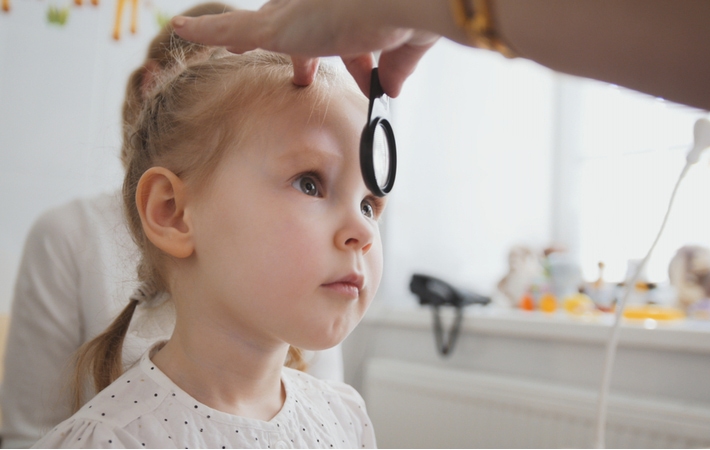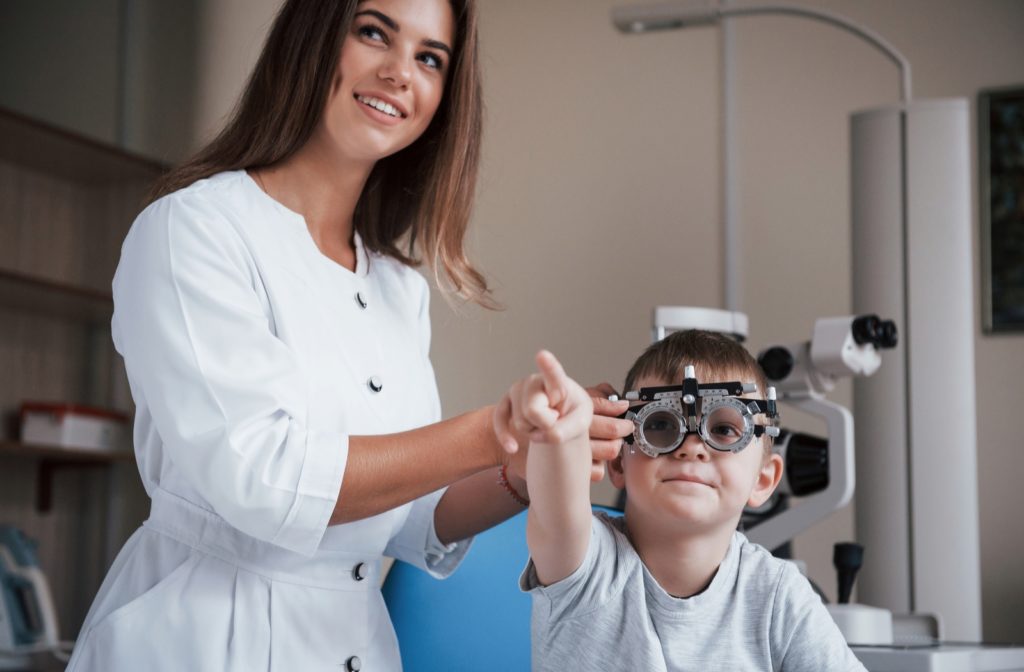Eye conditions and diseases can develop at any age, even in children. Regularly scheduled eye exams can help your optometrist diagnose any present issues. Because children are still growing, their examinations may differ.
What should you expect during a children’s eye exam? Continue reading to learn more about children’s eye exams, including why they’re important and what you should expect for your child’s next visit.
Children’s Eye Exams Are Crucial for Their Ocular Health
Everyone needs an eye exam, especially children. These examinations can identify any issues that may develop as they grow. A refractive error or another eye condition can affect your child’s development or cause discomfort.
Nearly 80% of children’s learning is visual; your child needs to read, write, play, and spend time with others during school. Good vision is critical for all of these tasks. An undiagnosed eye condition can negatively affect your child in several ways.
A visual problem can affect your child’s:
- School performance
- Normal development
- Social interactions
- Self-esteem
Children’s eye exams are important because your optometrist can detect eye conditions before they impact your child’s ocular health.
Early Diagnosis is Important
Approximately 20% of preschool-aged children have a vision problem, while 25% of older children need eyeglasses. Eye conditions may develop at any age, worsening with time. Early diagnosis is crucial to protect your child’s eye health and vision.
Regular eye exams can help your optometrist identify any present issues before they affect your child’s vision. If your child needs an examination, what should you expect at their next appointment?

What Should You Expect During a Children’s Eye Exam?
What happens in a children’s eye exam? The tests your optometrist uses depend on your child’s age.
Children’s eyes continue to grow as they do; there are several visual milestones your child will reach as they enter adulthood. In an eye exam, the tests performed depend on your child’s development. Children under a year old will typically only need an eye health evaluation to look for significant concerns.
Between the ages of 2 to 5, children can develop several vision problems as they grow. Your child will need a comprehensive eye exam as they begin to read, write, and engage in other school activities.
You should expect the following during your child’s eye exam:
Medical History
Before beginning with any tests, your optometrist will review your child’s medical history with you, including their birth, health conditions, and development milestones. You’ll take an active role during this part of the appointment.
Be prepared to discuss how your child is performing in school and other activities or if they’re struggling with their vision.
Visual Acuity
Visual acuity testing helps to evaluate your child’s vision. If your child is old enough to read, they’ll likely use the standard eye chart during this portion of the exam.
Refraction
When your child is 3, they’ll require a refraction test to determine if they need eyeglasses. Your optometrist uses this test to diagnose refractive errors such as hyperopia (farsightedness), myopia (nearsightedness), and astigmatism. A refraction test involves your child looking through a series of lenses to choose the ones providing the clearest image.
Eye Coordination
Your child’s eyes need to work together when completing everyday tasks. Eye coordination tests involve examining your child’s eye focusing, teaming, and movement to see how their eyes move, focus, and work together.
Your optometrist will test your child’s accommodation, ocular motility (the movement and alignment of the eyes), and binocular vision.
Eye Health Evaluation
An eye health evaluation consists of several different tests used to diagnose any potential problems. Your optometrist will look at the eye’s structure and surrounding tissue and measure your child’s eye pressure.
Some possible tests to expect include:
These are some possible tests your child may experience, but there are more available. Your optometrist will determine the most effective tests for your child.
Everyone needs regular eye exams, but the frequency can vary from person to person. While adults can benefit from an annual examination, how often should your child be seeing your optometrist?
When Should Your Child Have an Eye Exam?
With your child’s eyes developing as they grow, how often should they have an eye exam? The frequency changes with age, but your child should have several examinations to diagnose any visual problems or changes.
The American Academy of Ophthalmology states that children should receive an eye exam at the following milestones:
- 6 to 12 months
- 12 to 36 months
- 3 to 5 years
- Annually after 5 years
You should follow this schedule but listen to your optometrist’s advice. Your child may need more frequent visits if they have visual or ocular issues.
Book Your Child’s Next Eye Exam
Comprehensive eye exams can help protect your child’s eye health and vision. Issues can develop with time, so it’s important to schedule regular appointments. If your child is due for an eye exam, book an appointment.



